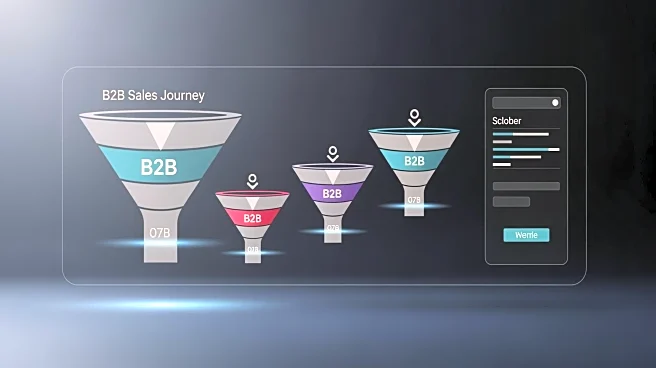What's Happening?
Shopify has released a guide on marketing optimization, emphasizing the importance of analyzing data to refine strategies and improve campaign performance. The guide outlines various channels for optimization, including website SEO, email marketing, and social
media strategies. By collecting user insights and identifying patterns, businesses can modify their marketing tactics to reach more customers effectively. The guide also highlights the continuous nature of marketing optimization, encouraging regular reviews to maintain relevancy in a rapidly evolving digital landscape.
Why It's Important?
Marketing optimization is crucial for businesses seeking to maximize conversions and return on investment (ROI). By refining strategies based on data analysis, companies can enhance the effectiveness of their campaigns, reaching more customers with compelling messages. This approach not only improves engagement but also helps businesses stay competitive in a dynamic market. As digital marketing trends shift, the ability to adapt and optimize becomes increasingly important for maintaining a strong market presence and achieving business goals.
What's Next?
Businesses are encouraged to implement the optimization tips provided by Shopify, using tools like Google Analytics and A/B testing to refine their marketing strategies. As companies adopt these practices, they may see improved campaign performance and increased customer engagement. Shopify's guide serves as a resource for businesses looking to enhance their marketing efforts, potentially leading to greater success in reaching target audiences and achieving desired outcomes.
Beyond the Headlines
The emphasis on marketing optimization reflects broader trends in the digital economy, where data-driven decision-making is becoming essential for business success. As companies increasingly rely on analytics to guide their strategies, ethical considerations around data privacy and consumer trust may arise. Additionally, the focus on optimization highlights the need for continuous learning and adaptation in the face of changing consumer preferences and technological advancements.













